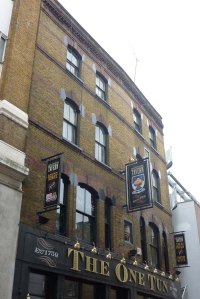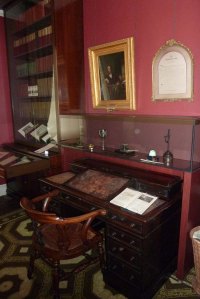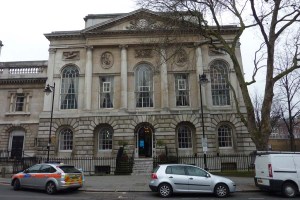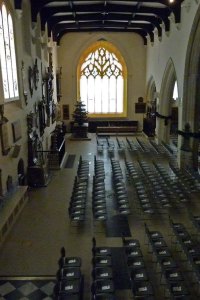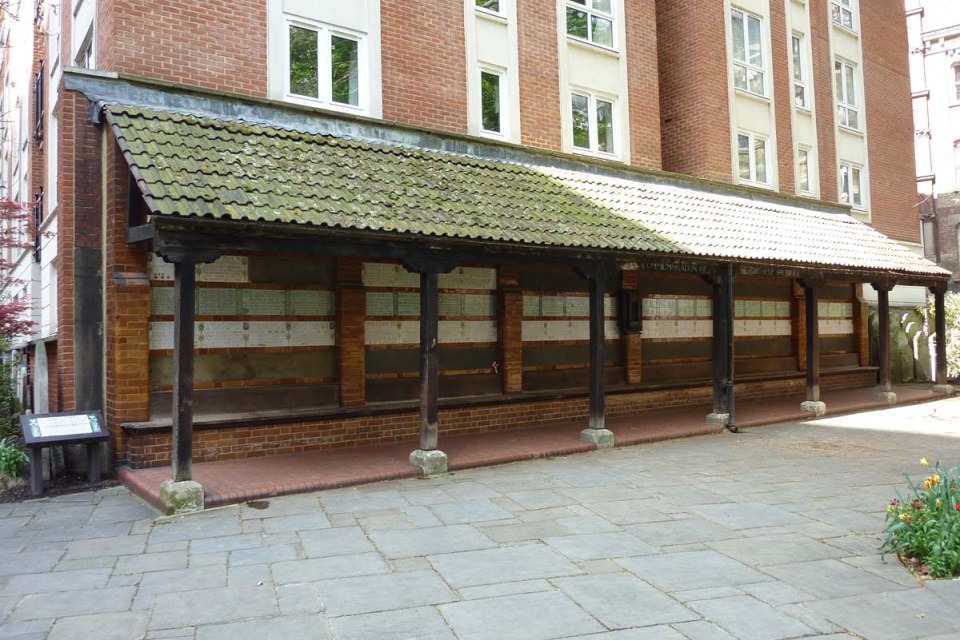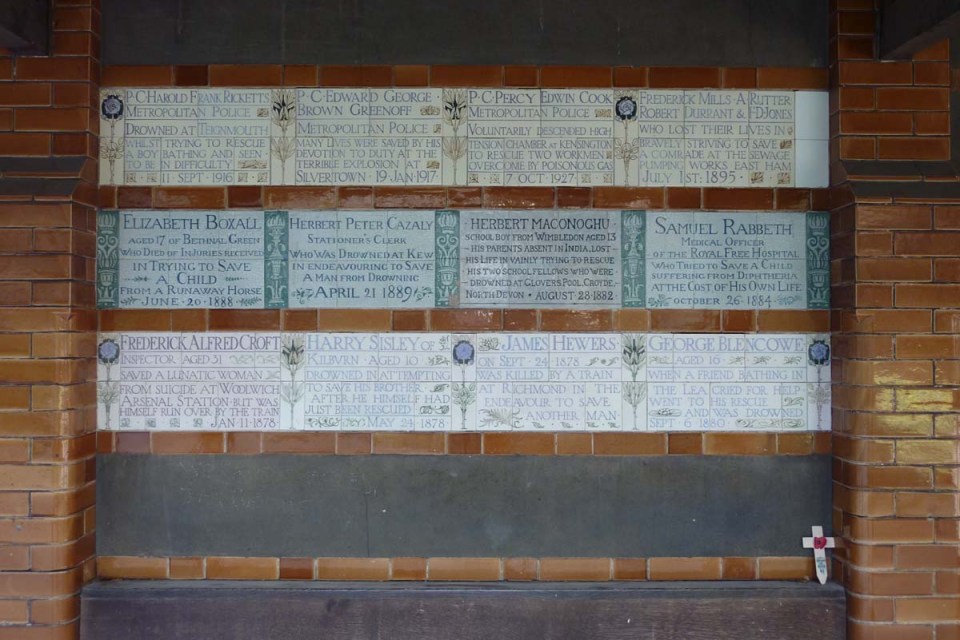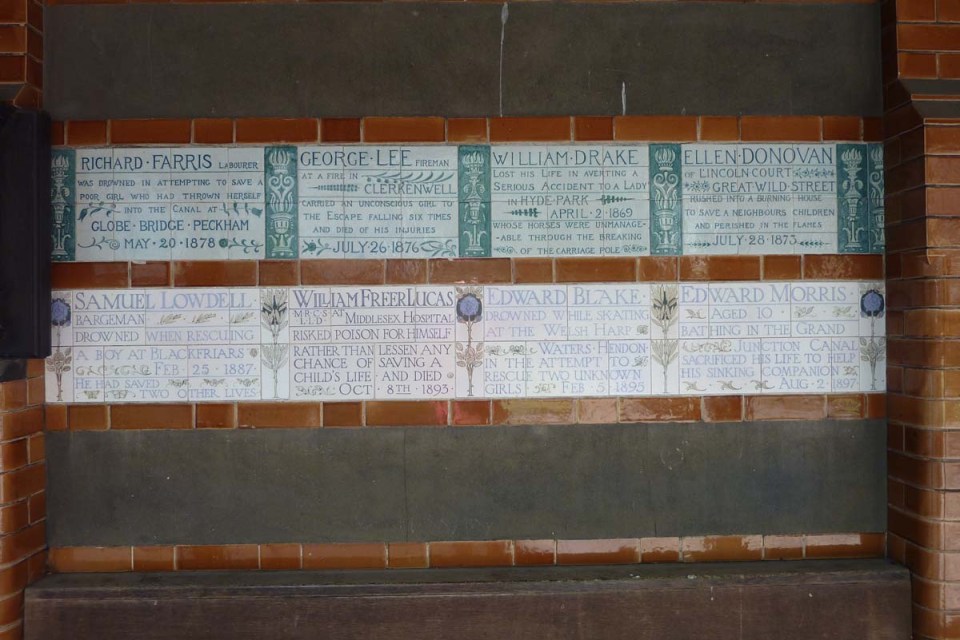This is my first proper blog entry, and it’s about a walk along the Thames Path from Tower Bridge to Greenwich. I have walked the Thames Path the other way – from Tower Bridge to Westminster and beyond – loads of times, and I feel quite ashamed to say that I’ve never taken the path through the Docklands.
I stopped off by the old Royal Mint building at Tower Hill, but was disappointed to find that the Roman wall underneath Royal Mint Court was locked up, so not a good start. Crossing over the main road, I walked into St Katharine’s Dock. This site once belonged to the Cnihtengild back in the 10th century, when King Edgar gave a strip of land on the eastern boundary of the City to 13 brave knights, to protect against Viking raids. The docks were built in 1828, replacing a hospital and the mediæval St Katharine by the Tower church, after which the docks are named. Goods as diverse as tea, rubber, wool, marble, sugar, tallow, and ivory were all unloaded here. The dock had (and still has) a narrow entrance which made it difficult for larger ships to navigate, and so the docks fell into decline as ships became bigger. The docks were abandoned altogether after World War II, but were redeveloped in the 1970s. Nowadays it is a pleasant marina complex, overlooked by apartments, and home to the Dickens pub.
Leaving the dock to the south, I made my way onto a cobbled Wapping High Street. Buildings here are a mixture of new apartment complexes and old wharves and warehouses which have been converted into apartments.
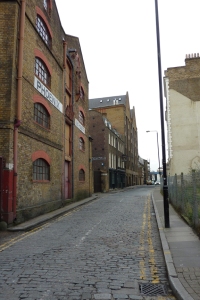
It is said that there were once 36 pubs along this road, but today very few remain. The first pub I came across was the Town of Ramsgate. This inn claims to be the oldest pub on the River Thames, and it is a narrow but deep building. Unfortunately it was before midday and so hadn’t opened yet, but I went down the alley down the side of the pub to find Wapping Old Stairs. Luckily it was low tide and I was able to get down onto the foreshore and take some photos of the view. The pub is so called because the fishermen of Ramsgate used to land their catches here in preference to Billingsgate, to avoid the higher taxes there.

There are a couple of interesting historic buildings across the road from the pub, down Scandrett Street. The first is the Turk’s Head cafe. This was once a pub run by Mog Murphy, who kept the pub open at all hours during World War II so that service personnel could try to seek news of their loved ones. By the 1980’s this had become derelict, and a group of local ladies successfully campaigned to restore the building, and today this is a cafe.

Along the same street is what was once St John’s School – a charity school which was founded in 1695 to educate 50 girls and 60 boys. This building dates from 1760, and has a couple of wonderful statues of a schoolboy and a schoolgirl in their blue uniforms on the front of the building. Why blue uniforms? Because blue dye was cheap.

Further along Wapping High Street is the Captain Kidd pub. It was still before midday and so this was also closed. Captain Kidd the pirate was hung at Execution Dock in Wapping – thought to have been on the site of the nearby Wapping New Stairs.

Next stop was another pub – the famous Prospect of Whitby. I have heard many stories over the years about what a great pub this is, but I’ve never made it here until now. It was a few minutes before 12 and so I went down the side of the pub and onto the foreshore. I spent a few minutes mudlarking, and picked up several pieces of clay pipe. Another bloke was also on the foreshore, having a cigarette, and he asked what I was picking up. I showed him the pieces of pipe and explained that I’m no expert, but these pipes would be dated anywhere between the 16th and 19th centuries. He looked around and found a piece of pipe, and went off looking very pleased with himself. It was now opening time, so I went back up the stairs and into the pub – and what a fantastic pub it was. It has a nice long bar (the longest pewter topped one in the country apparently) incorporating timbers from old ships and barrels, and there’s a superb flagstone floor which is the original one. Like many old London pubs, this is said to have once been frequented by Pepys and Dickens. If you like old pubs, with lots of character and history, and which also serve real ale, then I can fully recommend this one!




After a sandwich and a pint of Bombadier, I went for a wander around the pub before leaving, and it really is a tremendous place. If I hadn’t left when I did, I’d have stayed there all afternoon.
Opposite the pub is an old pumping station of the London Hydraulic Power Company, a charming red brick building which is now an arts centre.

Next stop was the rotunda of Brunel’s Thames Tunnel, the first tunnel under the Thames. The tunnel is now used by trains, with the rotunda serving as a ventilation shaft.

There’s a lovely account of the tunnel opening from the Illustrated London News here.
I continued on, past the Limehouse Marina, and on to Narrow Street and the Grapes pub. The pub is at the end of a row 18th century merchants houses, and is named as “The Six Jolly Fellowship Porters‟ in the Dickens‟ novel Our Mutual Friend.

I didn’t stop for a cheeky beer, though I was very tempted. I walked on to Canary Wharf and spent a good hour looking round the Museum of London Docklands. This was fascinating, but I hope to make another visit in the not too distant future, and so will write a blog entry for this another time. After leaving the museum I walked all the way along the path to Island Gardens, opposite Greenwich.

During the course of the day, I took quite a few photos of the river views, and these are my favourites:







